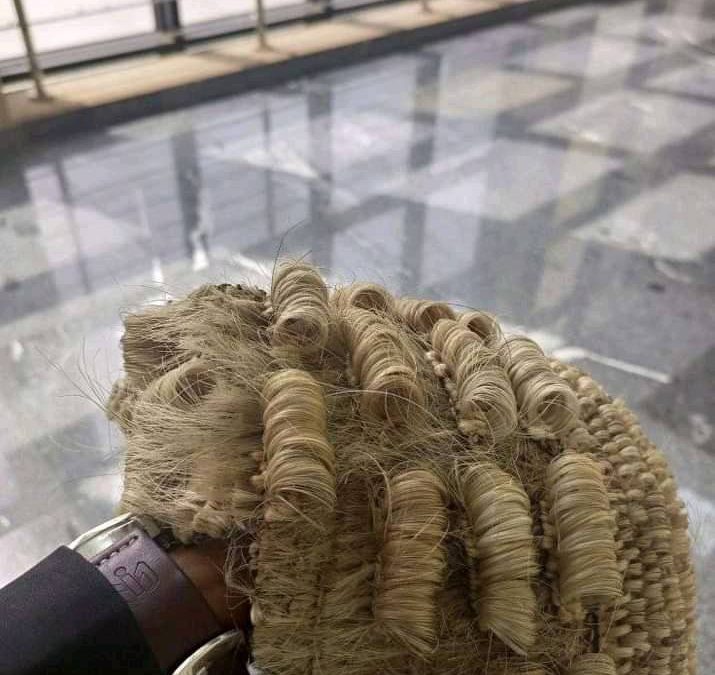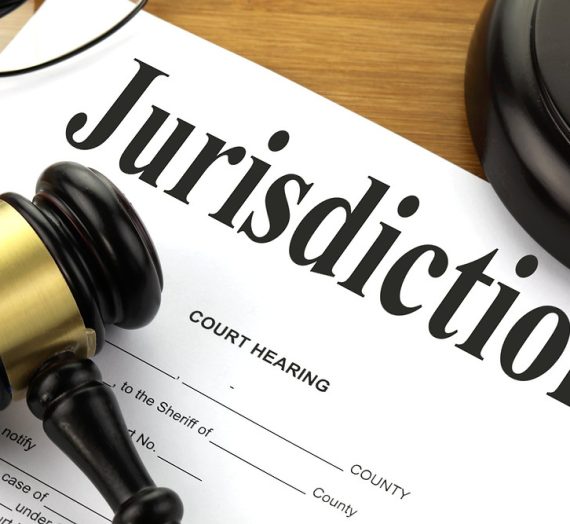Proving the Ingredients of an Offence
Ingredients of the Offence of Armed Robbery
UTTO v. STATE (2021) LPELR-56230(SC)
“Now the essential ingredients for the offence of armed robbery have been stated by this Court in a host of authorities. I wish to restate them here as follows:- (1). That these was a robbery (2). That the robbery was an armed robbery (3). That the accused person was one of those who robbed. All of the above must be provided beyond reasonable doubt before a conviction can be sustained and proof beyond reasonable doubt entails the prosecution producing enough evidence to justify the charge. See OLAYINKA AFOLALU VS THE STATE (Supra); FATAI OLAYINKA VS THE STATE (2007) 4 SCNJ 53; CHUKWUKA OGUDO VS THE STATE (2011) 12 SC (PT.1) 71.” Per SAMUEL CHUKWUDUMEBI OSEJI, JSC (Pp 28 – 29 Paras D – A).
OLAYIWOLA v. STATE (2021) LPELR-58288(SC)
“There are three ingredients required to successfully prove the offence of Armed Robbery which are; that there was a robbery or series of robberies, that each robbery was an armed robbery and that the defendant was one of those who committed the offence. See Nwaturuocha v. The State (2011) LPELR-8119 (SC) Pgs. 13-14, Paras. G-B, Bello v. The State (2007) 10 NWLR Pt. 1043 Pg. 564.” Per HELEN MORONKEJI OGUNWUMIJU, JSC (Pp 28 – 28 Paras B – D)
NWOKOCHA v. AG OF IMO STATE (2016) LPELR-40077(SC)
“It is to be noted that the essential ingredients of the offence of armed robbery are: (1) That there was a robbery. (2) That it was an armed robbery. (3) That the accused was the robber or one of the robbers. All the three ingredients must be altogether proved for the offence to be said to have been proved. See Adekoya v. State (2012) MSCJ vol. II p.20 – 21.” Per MARY UKAEGO PETER-ODILI, JSC (Pp 52 – 53 Paras E – A)
OLUGBODE v. STATE (2022) LPELR-58126(CA)
“To secure a conviction for the offence of Armed Robbery, the prosecution must prove the following ingredients by credible evidence: (a) That there was a robbery or series of robberies (b) That the robbery was an armed robbery (c) That the accused participated in the robbery. All the above ingredients must be proved. It is not sufficient that two of the ingredients have been proved leaving one. They all must co-exist for the offence to be proved. See PEDRO VS. STATE (2018) 17 NWLR (PT. 1649)463, BABATUNDE VS. STATE (2018) 17 NWLR (PT. 1649)549, SMART VS. STATE (2016) 9 NWLR (PT. 1516)447 AND EMEKA VS. STATE (2014) 13 NWLR (PT. 1425)614.” Per FOLASADE AYODEJI OJO, JCA (Pp 19 – 19 Paras B – E)
KANGE v. STATE (2021) LPELR-55688(CA)
“It is trite that for a prosecution to secure a conviction for armed robbery, it must establish beyond reasonable doubt the cumulative presence of the following ingredients of the offence: (i) that there was robbery or series of robberies; (ii) that the robbery was an armed robbery carried out with firearms or offensive weapons; and (iii) that the person charged with the offence was one of the robbers or implicated therein. The onus on the prosecution to prove the cumulative presence of the ingredients cannot be compromised in any respect. The onus does not shift at all as it rests squarely on the prosecution throughout the case. Where the prosecution fails to prove any of the ingredients, the offence of armed robbery would not have been established beyond reasonable doubt and the accused person would be entitled to be discharged and acquitted – Dawai Vs State (2018) 5 NWLR (Pt 1613) 499, Orisa Vs State (2018) 11 NWLR (Pt 1631) 453, Amos Vs State (2018) LPELR 44694(SC), John Vs State (2019) LPELR 46936(SC), Ayinde Vs State (2019) LPELR 47835(SC), Iorapuu Vs State (2020) 1 NWLR (Pt 1706) 391.” Per HABEEB ADEWALE OLUMUYIWA ABIRU, JCA (Pp 15 – 16 Paras D – C)
Ingredients of the Offence of Conspiracy
GARGA v. STATE (2022) LPELR-57677(SC)
“The ingredients required by law for the Prosecution to prove the offence of criminal conspiracy under Section 97 (1) of Penal Code are: a) An agreement between two or more persons to do or cause to be done some illegal act or some act which is not illegal by illegal means. b) Where the agreement is other than an agreement to commit an offence that some act besides the agreements was done by one or more of the parties in furtherance of the agreement. c) Specifically, that each of the accused individually participated in the conspiracy. See Yusuf v. FRN (2017) LPELR-43830 (SC) Pg. 26-27, paras. F; State v. Salawu (2012) ALL FWLR Pt. 614 Pg. 30-31; Kayode v. State (2016) LPELR-40028 (SC) Pg. 51-52, paras. F; Eze V. FRN (2017) LPELR-42097 (SC) Pg. 62-63, para. D; Obiakor v State (2002) 6 SC Pt. 11 Pg. 33 at 39-40 and Clark v. The State (1986) 4 NWLR Pt.35 Pg. 381.” Per HELEN MORONKEJI OGUNWUMIJU, JSC (Pp 18 – 19 Paras E – D)
STATE v. FAFURU (2022) LPELR-58482(SC)
“The ingredients of the offence of conspiracy under the Penal Code are as follows: a) An agreement between two or more persons to do or cause to be done some illegal act, or some act which is not illegal by illegal means. b) Where the agreement is other than an agreement to commit an offence, that some acts besides the agreement was done by one or more of the parties in the agreement, and c) Specifically, that each of the accused persons individually participated in the conspiracy. See: Musa v. The State (2016) LPELR-42803 SC; Obiako v. The State (2002) 6 SC (Pt. 11) 33; (2002) LPELR-2168SC.” Per ABDU ABOKI, JSC (Pp 14 – 15 Paras E – B)
ABACHA v. STATE (2002) LPELR-16(SC)
“Finally, the best evidence of conspiracy is usually obtained from one of the conspirators or from inferences. See this court’s remarks in the case of Patrick Njovens & Ors. v. The State (1973) NNLR 76 at page 95: “When it is proposed to give evidence of the happenings inside hell it is only a matter of common sense to call one of the inmates of that place or one whose business is carried out in reasonable propinquity to hell and it must be surprising indeed to find even a lone angel fit and qualified for the assignment. Indeed, it would be preposterous to look for such evidence in other directions. The overt act or omission, which evidence conspiracy is the actus reus and the actus reus of each and every conspirator must be referable and very often is the only proof of the criminal agreement which is called conspiracy. It is not necessary to prove that the conspirators, like those who murdered Julius Caesar, were seen together coming out of the same place at the same time and indeed conspirators need not know each other. See R. v. Meyrick & Ribuff (1929) 21 CAR. 94. They need not all have started the conspiracy at the same time for, conspiracy started by some persons may be joined at a later stage or later stages by others. The gist of the offence of conspiracy is the meeting of the mind of the conspirators. This is hardly capable of direct proof for the offence of conspiracy is complete by the agreement to do the act or make the omission complained about. Hence, conspiracy is a matter of inference from certain criminal acts of the parties concerned done in pursuance of an apparent criminal purpose in common between them and in proof of conspiracy the acts or omissions (and or commissions) of any of the conspirators in furtherance of the common design may be and very often are given in evidence against any other or others of the conspirators.” Per SYLVESTER UMARU ONU, JSC (Pp 78 – 79 Paras E – F)
KAREEM v. STATE (2021) LPELR-58392(SC)
“Sometimes, to prove conspiracy it only takes one of the conspirators to confess to the act or omission and inferences deduced from the evidence that other Defendants also conspired to carry out such an act or omission. See Abacha V. State [2002] SC Pgs. 78-79, Paras. E-F where it was held per Onu JSC that: “conspiracy is a matter of inference from certain criminal acts of the parties concerned done in pursuance of an apparent criminal purpose in common between them and in proof of conspiracy the acts or omissions (and/or commissions) of any of the conspirators in furtherance of the common design may be and very often are given in evidence against any other or others of the conspirators.” Per HELEN MORONKEJI OGUNWUMIJU, JSC (Pp 39 – 40 Paras F – C)
BALOGUN v. STATE (2018) LPELR-44215(SC)
– Whether it is necessary to prove that conspirators were seen together coming out of the same place at the same time
“It is not necessary to prove that the conspirators were seen coming out from the same place at the same time. Conspirators need not know each other. They also need not have started the conspiracy at the same time. For a conspiracy started by some persons may be joined at a later stage or stages by others. The gist of the offence of conspiracy is the meeting of the mind of the conspirators. See R vs Mevick & Rebuff (1929) 21 CAR 94; Njovens & Ors v. The State (1973) NSCC 257. It is therefore difficult to prove the offence of conspiracy by direct evidence. Conspiracy is a matter of inference from the criminal act of the parties concerned which act is done in pursuance of an apparent criminal purpose. It is therefore the duty of the Court in every case of criminal conspiracy to ascertain as best as it could the evidence of the complexity of any of those charged with the offence. See Daboh & Anor vs The State (1977) 5 SC 222: ERIM vs The State (1994) 4 NWLR (Pt. 346) 535.” Per PAUL ADAMU GALUMJE, JSC (Pp 12 – 13 Paras C – A)
GARBA v. STATE (2020) LPELR-51375(CA)
– Meaning and ingredients of the offence of conspiracy and how the offence of conspiracy can be inferred; whether evidence of what one accused says in the absence of the other conspirators is admissible against such others
“…The Appellant was also convicted of conspiracy to commit Armed Robbery. “Conspiracy is an agreement of two or more persons to do an act which it is an offence to agree to do” Nwosu Vs State (2004) 15 NWLR pt 897 pg 466, Amachree Vs Nig. Army (2004) 3 NWLR pt 807 pg 256. The ingredients of the offence of conspiracy punishable under Section 97 of the Penal Code are as follows: (a) An agreement between two or more persons to do or cause to be done some illegal act, or same act which is not illegal by illegal means. (b) Where the agreement is other than an agreement to commit an offence, that some acts besides the agreement was done by one or more of the parties in furtherance of the agreement and (c) specifically, that each of the accused persons individually participated in the conspiracy. Abacha Vs Federal Republic of Nigeria (2006) 4 NWLR pt 970 pg 239 Aituma Vs State (2006) 10 NWLR pt 989 pg 452. In this appeal, the Appellant conspired with this gang. He knew the 3rd accused person Jeremiah Stephen who enlisted him to convey their operational gun to the scene of crime. He of course knew what he was enlisted for, to convey the operational gun for a Robbery. There was no evidence that he participated in the actual Robbery. The offence of conspiracy is not defined in the Criminal or Penal Code. Therefore, direct positive evidence of the plot between the co-conspirators is hardly capable of proof. The Courts tackle the offence of conspiracy as a matter of inference to be deduced from certain criminal acts or inaction of the parties concerned. Oduneye Vs The State (2001) 13 WRN pg 88. In this appeal, the Appellant ferried the operational gun through the checkpoints to the scene of crime. Of course he was aware that the gun was not a toy to play with. He knew as a police officer that ferrying the gun across checkpoints was on its own a crime not to think of when it was going to be used for armed robbery. The offence of conspiracy is established once it is shown in evidence that the criminal design alleged is common to all the suspects. Proof of how the suspects are connected with or among themselves is not necessary. As a matter of fact, the conspirators need not know each other. They also need not to have started the conspiracy at the same time. The bottom line of the offence is the meeting of the minds of the conspirators. Nwosu Vs State (supra). The other accused person planned the armed Robbery and enlisted the help of the Appellant to assist them ferry the gun through the police checkpoints. There was from all these snippets of evidence a meeting of the mind of the Appellant with the other accused persons. It is very difficult to prove the offence of conspiracy. It is actually a matter of inference from certain acts of the parties. Consequently, the actual commission of the offence is not necessary to ground a conviction for conspiracy. All that is needed is a meeting of the minds to commit an offence and this meeting of the minds need not be physical.Nwosu Vs the State (2002) 10 NWLR pt 776 pg 612. Daboh Vs State 1977 5 SC pg 197. It is trite law that in a conspiracy proceedings evidence of what one accused says in the absence of the other conspirators is admissible against such others on the basis that if they are all conspirators what one of them say in furtherance of the conspiracy is admissible evidence against them, even though it might have been said in the absence of the other conspirators. This statement of law is thus an exception to the rule of hearsay. Nwosu Vs State (2004) 15 NWLR pt 897 pg 466. The Appellant was part and parcel of the conspiracy and as such was rightly convicted of the offence of Conspiracy to commit armed robbery.” Per UZO IFEYINWA NDUKWE-ANYANWU, JCA (Pp 14 – 17 Paras D – E)
UDO v. STATE (2020) LPELR-49723(CA)
– How the offence of conspiracy can be inferred
“The gist of the offence of conspiracy is the meeting of the mind of the conspirators. This is hardly capable of direct proof for the offence of conspiracy is complete by the agreement to do the act or make the omission complained about. Hence, conspiracy is a matter of inference from certain criminal acts of the parties concerned done in pursuance of an apparent criminal purpose in common between them and in proof of conspiracy the acts or omissions of any of the conspirators in furtherance of the common design may be and very often are given in evidence against any other or others of the conspirators. It is, therefore, the duty of the Court in every case of conspiracy to ascertain as best as it could the evidence of the complicity of any of those charged with that offence. See COKER J.S.C in NJOVENS VS. THE STATE (1972) LPELR- 2042(SC).” Per YARGATA BYENCHIT NIMPAR, JCA (Pp 20 – 21 Paras C – A)


